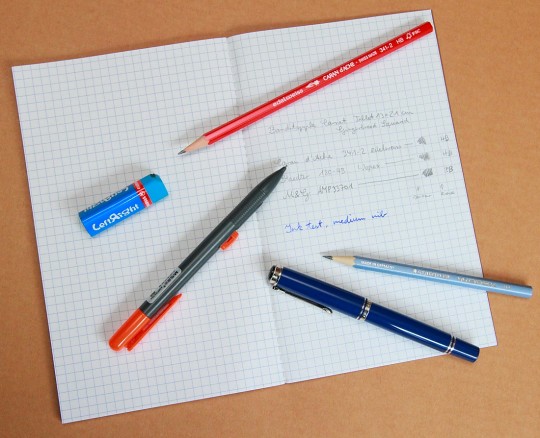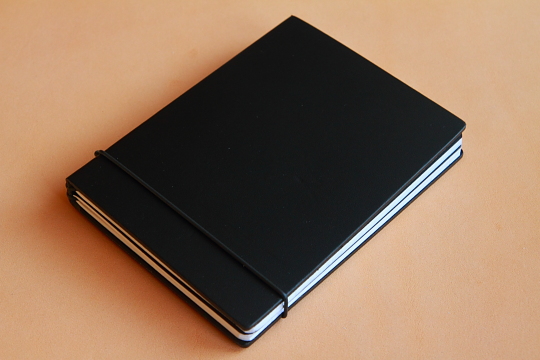Oxford’s Rhodia-style notepads
You might remember my blog post about the Carrefour Bloc-notes. Today I want to talk about another Rhodia-style notepad, the Oxford Bloc [1]I’m not sure what the official name is. There is a similar products, the Bloc Idéa, which seems to have the same format and the same 80g satiné extra blanc Optik Paper, but the cover of the … Continue reading. I bought this notepad for €1.05 (~ $1.39; £0.85) at J. A. Hofmann Nachfolger in Würzburg, Germany. I haven’t seen it in any other brick and mortar shop yet, but I have seen several online shops that sell this notepad.
The company
Despite the British-sounding name Oxford belongs to Groupe Hamelin, a French manufacturer of paper and stationery with roots that go back to 1864 and with plants in nine countries.
Rhodia Oxford Carrefour
Just like the Rhodia and the Carrefour notepads this notepad is made in France and just like the Rhodia and the Carrfour notepad, the Oxford notepad is held together by a staple, too, and features a orange fold-around cover. The notepad is available in the same common formats – the one on the photo is the 74 x 105mm version.
The paper
The paper feels less yellow and more purple than the Rhodia paper and less grey than the Carrefour paper. The grid printed on the paper is similar to the one on Rhodia paper, much less blurry than the Carrefour grid. The paper feels very smooth – no wonder the name of the paper has satiné in it.
It is a fantastic paper for fountain pens and ink, the inks I tried don’t show through on the reverse side at all, even though one of the nibs was rather wet. For pencils it is a different matter though. The paper is so smooth that the graphite from the point of the pencil doesn’t seem to want to stick to it as much as on most other paper. As a result the line from the pencil feels slightly lighter than on other paper. Lines also feel lighter than on the previously discussed Oxford Black n’ Red polynote notepad. Both Oxford products use Optik Paper, but the Black n’ Red’s paper has a density of 90 g/m², compared to the orange notepad’s 80 g/m². Just as with the Black n’ Red it is also easy to erase graphite from the Rhodia-style notepad’s paper, but there is a chance that you will still be able to see the indentation where the pencil line used to be.
Price and exchange rates: April 2012
As mentioned in the Black n’ Red blog post Hamelin / Oxford doesn’t react to query sent through their web site’s “Contact Us” form, therefore I’m unable to provide more information about the Optik Paper used.
References
| ↑1 | I’m not sure what the official name is. There is a similar products, the Bloc Idéa, which seems to have the same format and the same 80g satiné extra blanc Optik Paper, but the cover of the Bloc Idéa is different |
|---|
Oxford’s Rhodia-style notepads Read More »















